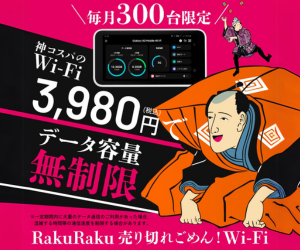iPhone SE 第3世代(SE3) 口コミ•評判•レビューから見る良い点•悪い点
【この記事にはPRを含む場合があります】
.png)
iPhone SE 第3世代の口コミや評判ってどう?使い勝手やスペックは?
iPhone SE 第3世代(SE3) が気になる!でも、高額な買い物である以上、購入するかは実際に使ったユーザーの口コミ・レビューを見てから決めたい…という人、少ないですよね。
今回は、実際 iPhone SE3 を使用してみた人が感じた良い点、悪い点を中心に解説していきます。
iPhone SE 第3世代(SE3) は、iPhone13と同様のプロセッサを搭載していたり、5Gに対応していたりする点など魅力があります。ぜひ参考にしてみてください。
- iPhone SE 第3世代(SE3) 詳細スペックの比較
- iPhone SE 第3世代(SE3) の良い口コミ•評判•レビュー
- iPhone SE 第3世代(SE3) の良い口コミ•評判•レビュー① 廉価版なのに、最新プロセッサ A15 Bionicを搭載
- iPhone SE 第3世代(SE3) の良い口コミ•評判•レビュー② 安定感のあるホームボタンを搭載
- iPhone SE 第3世代(SE3) の良い口コミ•評判•レビュー③ TouchIDが使える
- iPhone SE 第3世代(SE3) の良い口コミ•評判•レビュー④ 5G•デュアルSIM対応と通信面も充実
- iPhone SE 第3世代(SE3) の悪い評判•口コミ
- iPhone SE 第3世代(SE3) の悪い評判•口コミ① ディスプレイが狭く感じる
- iPhone SE 第3世代(SE3) の悪い評判•口コミ② カメラの性能はiPhone13と大差がある
- iPhone SE 第3世代(SE3) の悪い評判•口コミ③ FaceIDがマスク対応したことでメリットが弱くなった
- iPhone SE 第3世代(SE3) の悪い評判•口コミ④ 価格が上がっている
- iPhone SE 第3世代 良い点・悪い点 まとめ
iPhone SE 第3世代(SE3) 詳細スペックの比較

(出典:Apple)
| iPhone SE3(第3世代) | iPhone SE2(第2世代) | iPhone13 | |
| 大きさ | 138.4 x 67.3 x 7.3mm | 138.4 x 67.3 x 7.3mm | 146.7 x 71.5 x 7.65mm |
| ディスプレイ | 4.7インチReina HD | 4.7インチReina HD | 6.1インチSuper Retina XDR |
| プロセッサ | A15 Bionic | A13 Bionic | A15 Bionic |
| 重さ | 144g | 148g | 173g |
| ストレージ | 64GB / 128GB / 256GB | 64GB / 128GB / 256GB | 128GB / 256GB / 512GB |
| 認証 | TouchID(指紋認証) | TouchID(指紋認証) | FaceID(顔認証) |
iPhone SE3(第2世代)とiPhone SE2(第2世代)、iPhone13を比較してみました。
やはり、iPhone13と比べて、SEシリーズはサイズが小さく、軽くて、持ち運びに便利なほか、人気が根強いTouchID(指紋認証)搭載など、SEシリーズのどちらかが良いという人もいるかと思います。
一方、iPhone SE2 と iPhone SE3 の2台は大差がないと思えるほど似通っていることがわかります。

こうしてみると、価格が下がってきているiPhone SE2 を選択するという手はありですね。
iPhone SE 第3世代(SE3) の良い口コミ•評判•レビュー
iPhone SE 第3世代(SE3) の良い口コミ・評判・レビューから見ていきます。
実際に調査していくと、口コミでは好意的な内容が多くありました。

iPhone SE 第3世代(SE3) の良い口コミ•評判•レビュー① 廉価版なのに、最新プロセッサ A15 Bionicを搭載
https://twitter.com/sanpai_er/status/1505931979652415490
iPhone SE 第3世代(SE3) には、iPhone13で使用されている最新の最新プロセッサ A15 Bionic が搭載されています。
A15 Bionic は、パソコンにおけるCPUのようなもので、iPhoneの速い処理速度に貢献しています。

CPUの影響力がよくわからないのですが、それほど重要なのでしょうか?
多くの方は、プロセッサの性能が上がるとネットが速くなったり、ゲームで処理落ちしなくなったりといったメリットがあると考えがちです。
じつは、プロセッサの差は “写真写りの差” にも大きな影響を与えます。
iPhoneで撮影をした際、色味や明るさ、階調などの解析をプロセッサが行います。その結果、処理能力の低いプロセッサでは、でてくる写真に差が出てきます。
ゲームに興味がないからと言って、型落ちのiPhoneを使用するより、最新のプロセッサを搭載したiPhone SE 第3世代(SE3) を選ぶことで、さまざまな恩恵があるんです。
iPhone SE 第3世代(SE3) の良い口コミ•評判•レビュー② 安定感のあるホームボタンを搭載
iPhone SE 第3世代(SE3) には、“感圧式のホームボタンが搭載“されています。
物理的なボタンではないので、少し違和感はあるかもしれませんが、「ホームボタンは必要!」という人も多くいるので人気が高いです。
iPhone SE第3世代ホームボタンあるしカメラも普通だし非常にwell
— KamesaN (@KamesaN_0115) April 5, 2022

感圧式なので、「疑似的にボタンをクリックしている感じがする」というものですね。でも慣れたら、物理ボタンと差はなく使いやすいです!
iPhone SE 第3世代(SE3) の良い口コミ•評判•レビュー③ TouchIDが使える
iPhone SE 第3世代(SE3) は、“TouchID(指紋認証)も搭載” しています。
https://twitter.com/ttdonz/status/1510891599093702658
3割以上が、 iPhone SEシリーズのサイズや指紋認証ができるホームボタン付きのデザインを気に入って購入することが、改めて浮き彫りになった
(出典:OTONA LIFE)
iPhone SE 第3世代(SE3) の良い口コミ•評判•レビュー④ 5G•デュアルSIM対応と通信面も充実
iPhone SE 第3世代(SE3) は、“5GとデュアルSIMに対応” しています。

デュアルSIMだと使い方のバリエーションが増えるのでうれしいです!
“デュアルSIM” の場合、つぎのような使い方が可能です。
デュアルSIMの活用方法1. 通話会社とデータ通信の会社を分ける
iPhone SE 第3世代(SE3) をデュアルSIMで使う場合、“通話会社とデータ通信の会社を分けることが可能” です。
一例をあげて説明します。たとえば、音声通信を『楽天モバイル』、データ通信を『IIJmio』で利用する場合を見てみましょう。
<音声通信とデータ通信で別々に契約した場合の例>
・1つ目のSIMカードを『楽天モバイル』と契約。
→月額1,100円で10分以内の電話を何度でもかけられます。(※Rakuten Linkを使用しない場合)
・2つ目のSIMカードを『IIJmio』と契約。
→データ通信だけに使用することで月額1,650円と抑えられます。
合計で2,750円。
毎月2,000円台という安価で、10分以内の電話が掛け放題になり、毎月20GBまでのデータ通信が可能になるんです!
このように通話プランとデータ通信プランを組み合わせることで、毎月の通信コストを抑えて節約できるので、デュアルSIMに対応しているiPhone SE 第3世代(SE3) は魅力的ですよね。
デュアルSIMの活用方法2. 仕事とプライベートを使い分ける
iPhone SE 第3世代(SE3) をデュアルSIMで使う場合、“通話会社とデータ通信の会社を分けることが可能” です。
デュアルSIMなら “片方のSIMカードを無効にできる” ので、休みの日でも仕事の電話がかかってくる…というケースを防げ、プライベート優先にしたい時におすすめです。

これは便利ですね!休みの日は、仕事の電話受け取りたくないですもの。。
やっぱりそーですよね!
デュアルSIMってことは、nanoSIMも使えるし、eSIMも使えるってことでいいんですよね?
iPhone 7からiPhone SE3へのオンライン購入で自宅でSIM交換できるなら、やっぱり買い替え考えよーかなー?
— ストッパー@聖ちゃん神推し (@stopper14) March 12, 2022
iPhoneSE3とSE2の比較
・ディスプレイきれいになってる?
(色味が良くなってる?)
・CPU更新してサクサク感上がってる
・5Gは通信もたつきなくて良いマイナーアップデートながらスペックの向上は実感するわね
— ライムスイーツ (@Rhymesweets) April 5, 2022
iPhone SE 第3世代(SE3) の悪い評判•口コミ
高評価の口コミが多い、iPhone SE 第3世代(SE3) ですが、悪い評判・口コミについても調査してみました。
iPhone SE 第3世代(SE3) の悪い評判•口コミ① ディスプレイが狭く感じる
-300x172.png)
iPhone SE 第3世代(SE3) のディスプレイは、『4.7インチ』。昨今のスマホに比べても小さいタイプです。
片手で持ちやすい大きさが好きという人も多いので、それほどマイナスポイントでもないのですが、画面の上下に黒い枠(ベゼル)があるため、4.7インチよりさらに小さく感じる傾向があり、「ディスプレイが狭く感じた…」という口コミが散見されました。
画面を横にして、ゲームをやる場合ベゼルがあると操作しやすいという声もあるものの、日常使いでは画面を小さく感じるのと、デザイン性という点で、不満に感じる人もいるようです。
iphone se3 って、じつはダサいんじゃなかろうか…
と思い始めたディスプレイの外側が、
iPod touch とかは白いけど、
se3は黒じゃん?なまじ黒いから、本体の上下ギリギリいっぱいまでディスプレイがある感じ(よくある最近のスマホ)に見えるのだけど、
上と下に、ドドーンと黒帯が鎮座してる感じ— siorin' (@siorixsion) March 25, 2022
iPhone SE 第3世代(SE3) の悪い評判•口コミ② カメラの性能はiPhone13と大差がある
iPhone SE 第3世代(SE3) と iPhone13 のカメラでは、スペックで見る以上に大差があります。

普段撮影するレベルでは、iPhone SE3 でも十分に綺麗な写真が撮影できますけど。
また仕上がりに関しても、やはりiPhone13のほうが綺麗という声も多くあります。
iPhone se3欲しいけど色とカメラの質的には13が欲しい、どしよ
— 卣 (@kinoyu_oyu) April 3, 2022
iPhone SE3のカメラ。
もちろん13ProMaxには到底及ばないんだけど8に比べるとカメラの性能が雲泥の差だわw— Jin (@Jin_catastrophe) April 1, 2022
iPhone SE 第3世代(SE3) の悪い評判•口コミ③ FaceIDがマスク対応したことでメリットが弱くなった
不満とは少し違いますが、FaceIDがマスク対応したことで、iPhone SE 第3世代(SE3)のメリットがあまりなくなった…という口コミもありました。
iPhone SE 第3世代(SE3) の認証には、“TouchID(指紋認証)” が使われています。
コロナ禍において、マスクを外さないとFaceID(顔認証)では認証されないということもあり、TouchID(指紋認証)に人気が高まっていました。
しかし、FaceID(顔認証)がマスクをしたままでも認証できるようになったため、TouchID(指紋認証)の優位性が低くなったと感じる人もいるようです。
ずっと使い続けていたから電池の消耗が激しいので、このタイミングでiPhoneSE3にしようかと思ったけど、FaceIDがマスク対応になったので、iPhone13も捨て難く…迷うなぁ。ピンク可愛かったんだよねぇー!
— 桃華 (@momoka_lp) March 18, 2022
iPhoneSE3がtouchIDと聞いて早速購入を検討したものの、容量が256GBまでしかなく困った。
過去の写真や動画を消しながらやりくりしているけれど、一応8plusでもウマ娘は動くし困っているのは容量だけ。
14発表まで待ってみるか…
マスクしたままfaceIDいけるようになるなら13でも良いな。— 愛ゆえに@ナイスネ医チャ専属 (@aiyueniaiwosute) March 16, 2022
iPhone SE 第3世代(SE3) の悪い評判•口コミ④ 価格が上がっている
iPhone SE 第3世代(SE3) の悪い評判・口コミのなかで、もっとも多かったのが、“価格面” についての声です。
iPhone SE 第3世代(SE3) を iPhone SE 第2世代(SE2) と比較すると、スペック面での目立った進化はなく、それでいて価格が高いという声を聞きます。
iPhone SE 第3世代(SE3) が発売されたことで、iPhone SE 第2世代(SE2) の価格が下がり、「SE2の方がお得じゃないか…?」といった口コミも見られました。
iPhonese3高いな
市場にIPhoneの中古溢れてるのに
新しい投げ売りの端末
しかも12以降のiPhoneはマスク着けて解除できる仕様にアップデートあり
での発売で指紋にこだわる必要もなく
中古か新品
もしくnmpで悩ます
リンゴを剥いて食べるか かじるかの
選択を迫る新しいアップルへのお布施— 日比野退屈 (@katutenokotodam) March 16, 2022
iPhoneSE3買おうかと思ったけどSE2と中身ほぼ同じで2より8700円高いんだとさ
楽天に乗り換えて一括0円でSE2買うのが1番コスパ良さそう— 直希 (@SizeSpan) March 16, 2022
https://twitter.com/pirlo_0581611/status/1501846293777293322

こうした状況を踏まえると、SE3を購入するメリットが薄れてしまいますね。
iPhone SE 第3世代 良い点・悪い点 まとめ
iPhone SE 第3世代(SE3) の評判•口コミ•レビューを中心に紹介しました。
価格面を考慮すると、第2世代(SE2) もありかなと思う反面、きれいな写真を撮りたい人や、オンラインゲームなど速度重視の使い方をする人、初めてiPhoneを使う人なら、第3世代(SE3) を選んだ方が、より快適にインターネット生活を楽しめるかもしれません。
ぜひこの機会に「自分にはどの端末が良いか」、検討してみてください。
<iPhone SE 第3世代(SE3) がおすすめの人>
・ハイスペックな機種にしたい
・バッテリーの持ちに少しでも余裕のあるタイプを選びたい
・とにかく最新の機種を安価で手に入れたい
・初めてiPhoneを購入
<iPhone SE 第2世代(SE2) がおすすめの人>
・スペックより価格重視
・普通に撮れるカメラがあればいい
・そこそこのスペックのiPhoneが欲しい



